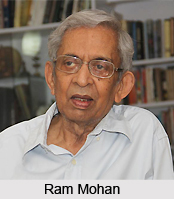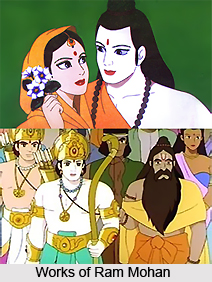 Ram Mohan is a legendary Indian animator, title designer and design educator. He is a veteran in the Indian animation industry and is affectionately known as father of Indian Animation. His significant role in the evolution of animation in India made him earn a number of prestigious awards. He has bagged the National Film Award twice for Best Non-Feature Animation Film, first in 1972 for `You Said It` and then in 1983 for `Fire Games`. He is also the recipient of Padma Shri, the fourth-highest civilian award given by Government of India. Presently, he is serving the role of chairman and chief creative officer at Graphiti Multimedia, a Mumbai-based animation company which was established in 1995. He also has established the Graphiti School of Animation in 2006.
Ram Mohan is a legendary Indian animator, title designer and design educator. He is a veteran in the Indian animation industry and is affectionately known as father of Indian Animation. His significant role in the evolution of animation in India made him earn a number of prestigious awards. He has bagged the National Film Award twice for Best Non-Feature Animation Film, first in 1972 for `You Said It` and then in 1983 for `Fire Games`. He is also the recipient of Padma Shri, the fourth-highest civilian award given by Government of India. Presently, he is serving the role of chairman and chief creative officer at Graphiti Multimedia, a Mumbai-based animation company which was established in 1995. He also has established the Graphiti School of Animation in 2006.
Early Life and Education of Ram Mohan
He was born in the year 1931. He received his graduation degree in Chemistry from the University of Madras. He then moved to Mumbai city to pursue his post-graduation but left it to join the Cartoon Films Unit, Films Division, Government of India in 1956. He received training in animation techniques from Clair Weeks of Walt Disney Studios, under the US Technical Aid program.
Career of Ram Mohan
Mohan started his career at the Cartoon Films Unit, Films Division of India in 1956 and continued working there till the late 1960s. Then he founded Ram Mohan Biographics, in 1972 with the aim of providing training to young artist. Later in 1998, it merged with UTV Toons, a division of United Studios Limited (USL) (UTV Group).
His contributions span a wide spectrum of work across the areas of 2D classical animation, 3D computer graphics animation to cinema. At the starting of his career, he did character design and story boards for `This is Our India`, an animated film adapted from a book by Minoo Masani. He scripted, designed and animated many of Cartoon Film unit`s productions from 1960 to 1967. His most remarkable works include `Homo Saps` which grabbed the National Award for Best Experimental Film, 1967, and `Chaos` which won an Award at the Leipzig Festival of short Films in 1968.
In the year 1968, he left Films Division and joined Prasad Productions as chief of their animation division. Then in 1972, he established his own production company, Ram Mohan Biographics. The company worked on commercials, and the animated feature Ramayana: The Legend of Prince Rama (1992), which he co-directed in collaboration with Yugo Sako from Japan.
Some of his animation sequences for mainstream filmmakers comprise of an animated song for B.R. Chopra`s `Pati Patni Aur Who` (1978), a title sequence for Satyajit Ray`s `Shatranj Ke Khiladi`, and a sequence for Mrinal Sen`s Hindi film, `Bhuvan Shome`.
Achievements of Ram Mohan
•Padam Shri in 2014
•I.D.P.A. `Ezra Mir` award for Life-Time Achievement Broadcast India in 2003
•Advertising Club Award `ABBY` for Life Time Achievement in 2001
•Communication Arts Guild Hall of Frame award for Life Time achievement in 1996
•National Award for the Best Animation Film, "Fire Games" in 1983
•National Film Award for Best Non-Feature Animation Film, "You Said It" in 1972
•National Award for the Best Film on family planning, "Baap Re Baap" in 1969.













